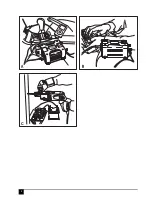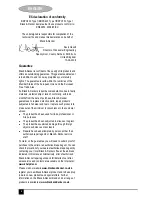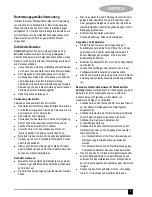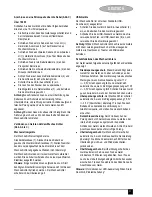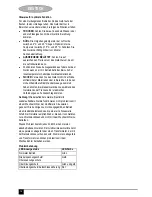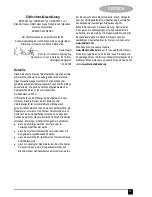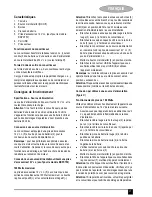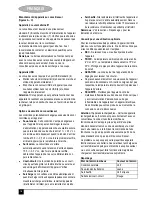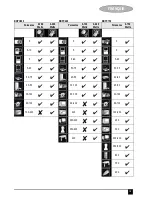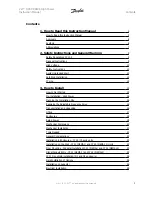
4
ENGLISH
How the power inverter works
The power inverter converts low voltage dc (direct current)
from a battery or other power source to standard 230 Vac
(alternating current) household power.
The power inverter output waveform
The ac output waveform of the power inverter is known as a
“modified sine wave”.
This type of waveform is suitable for most ac loads, including
linear and switching power supplies used in electronic
equipment, transformers and motors.
Operating instructions
Power source requirements
The power source must provide 12 Vdc and must be able to
supply the necessary current to operate the load.
Warning!
The power inverter must be connected only to
batteries with a nominal output voltage of 12 Volts. The
appliance will not operate from a 6 Volt battery and will
sustain permanent damage if connected to a 24 Volt battery.
Connection to a power source.
The power inverter comes equipped with a 12 Vdc
accessory plug (5) and/or battery clamps (4) for connection
to a dc power source.
Note:
For optimal performance make sure that the engine is
running while operating the inverter. However, the power
inverter may not operate while the engine is starting because
the battery voltage can drop substantially during cranking.
Connecting to a power source using the 12 Vdc
accessory plug (not model BDPC750)
Up to 100 W only
The 12 Vdc accessory plug (5) is suitable for operating the
power inverter at power outputs up to 100 Watts only. The tip
of the plug is positive (+) and the side contact is negative (-).
Warning!
Connect the ring terminals to the terminals (3) of
the power inverter before connecting the accessory plug to
the accessory outlet. Make sure that the On/Off switch (2) is
turned off and that no flammable fumes are present in the
installation area.
X
Connect the ring terminal of the red cable to the red
terminal (3) marked (+) on the back of the power
inverter.
X
Connect the ring terminal of the black cable to the black
terminal (3) marked (-) on the back of the power inverter.
X
Connect the power inverter to the power source by
inserting the 12 Vdc accessory plug (5) firmly into the
accessory outlet of a vehicle or other dc power source.
X
Set the On/Off switch (2) to on.
X
Plug the USB connector from the equipment you wish to
operate into the USB port (6) and operate as normal.
Note:
On some vehicles the accessory socket may only
become live when the ignition key is in the accessory
position.
Warning!
Do not use with positive ground electrical
systems, (i.e older vehicles).
Connecting to a power source using the cables (fig. C)
Above 100W
Use the cables and connect the appliance directly to the
12 Volt power source as follows:
X
Make sure the appliance power is turned off and that no
flammable fumes are present in the installation area.
X
Connect the red cable to the red terminal (3) marked (+)
on the back of the power inverter.
X
Connect the black cable to the black terminal (3)
marked (-) on the back of the power inverter.
X
Connect the red battery clamp (4) to the positive
terminal of the battery.
X
Connect the black battery clamp (4) to the negative
terminal of the battery.
X
Make sure that all connections between the battery
clamps (4) and the terminals (3) are secure.
X
Set the On/Off switch (2) to on.
X
Insert the plug from the the equipment you wish to
operate into the mains socket (7) and operate as
normal.
Warning!
Loose connectors may cause overheated wires
and melted insulation. Check to make sure you have not
reversed the polarity. Damage due to reversed polarity is not
covered by our guarantee.
Warning!
A reverse polarity connection will result in a blown
fuse and may cause permanent damage to the power
inverter.
Connecting devices to your inverter (fig. A - C)
AC devices
The power inverter is equipped with a standard mains
socket (7). Plug the cord from the equipment you wish to
operate into the mains socket (7). Make sure that the
wattage requirement of your equipment does not exceed the
rated wattage indicated on the unit.
The appliance can be hard-wired to an application, however
we recommend that you consult a qualified electrician for
this type of installation.
Note:
Some power supplies may not operate with this
inverter due to the inrush currents required to start those
devices. The inverter will shut down in overload mode.
Summary of Contents for BDPC200
Page 2: ...2 C ...
Page 81: ...81 ...


